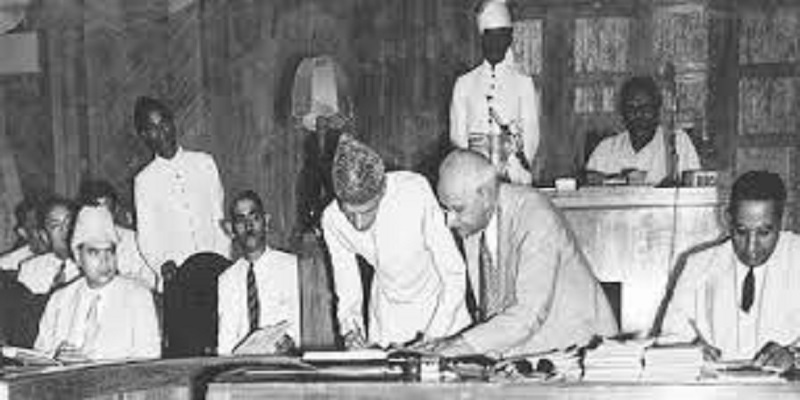The Lucknow Pact 1916 in India's Struggle for Self-Governance
The Lucknow Pact, a historic agreement signed in 1916, played a pivotal role in shaping the political landscape of British India. This pact was a significant milestone in the struggle for Indian self-rule and marked an important phase in the evolution of communal politics. The pact emerged as a result of negotiations between the Indian National Congress and the All India Muslim League, representing the Hindu and Muslim communities respectively.
The background leading up to the Lucknow Pact is crucial for understanding its significance. During the early 20th century, India was under British colonial rule, and demands for self-governance were gaining momentum. The political scenario was marked by increasing communal tensions, with the Muslim League articulating the interests of the Muslim community and the Congress representing the Hindu majority.
The partition of Bengal in 1905 had sown the seeds of religious polarization, as it was perceived by many as an attempt to divide Hindus and Muslims along religious lines. The Swadeshi Movement, which followed the partition, further heightened communal tensions. The Morley-Minto Reforms of 1909 had introduced separate electorates for Muslims, providing a legal framework for communal representation. However, this move deepened the divide between Hindus and Muslims, setting the stage for future political developments.
By the time of World War I, the political landscape had evolved, and there was a growing realization among Indian leaders that they needed to present a united front to secure political concessions from the British. Against this backdrop, efforts were initiated to bridge the gap between the Congress and the Muslim League.
The leaders of the Congress, including Annie Besant and Bal Gangadhar Tilak, had advocated for a more inclusive approach, emphasizing the need for Hindus and Muslims to work together for common political objectives. On the other hand, the Muslim League, led by figures like Aga Khan and Muhammad Ali Jinnah, was concerned about protecting the political rights and interests of the Muslim community.
The turning point came in 1916 during the Lucknow Session of the Congress. The leaders of the Congress and the Muslim League engaged in extensive negotiations, leading to the formulation of the Lucknow Pact on December 29, 1916. The pact was a mutual agreement between the two major political entities, and it addressed several key issues to foster Hindu-Muslim unity and pave the way for constitutional reforms.
One of the significant provisions of the Lucknow Pact was the demand for separate electorates for Sikhs, Christians, and other minority communities in addition to Muslims. This reflected a broader commitment to safeguard the political interests of various religious and ethnic groups in British India. The pact also called for an increase in the number of elected seats in both central and provincial legislatures, aiming to provide more representation to Indians.
Furthermore, the Lucknow Pact stipulated that there should be no territorial redistribution, ensuring that provinces with a Hindu majority would not be merged with provinces having a Muslim majority and vice versa. This provision aimed to address concerns related to the possible amalgamation of provinces along religious lines, a contentious issue that had contributed to communal tensions.
The pact played a crucial role in shaping the Montagu-Chelmsford Reforms of 1919, which laid the groundwork for a more representative and responsible government in India. The reforms introduced a system of dyarchy, dividing the powers of the government into reserved and transferred subjects. Additionally, it expanded legislative councils and increased Indian representation.
Despite the positive aspects of the Lucknow Pact, it was not without its criticisms and challenges. Some critics argued that the pact did not go far enough in addressing the aspirations of various communities, while others raised concerns about the perpetuation of communal electorates, which they believed would only deepen religious divisions.
Moreover, the emergence of the Khilafat Movement and the Non-Cooperation Movement in the post-pact period revealed the limitations of Hindu-Muslim unity. The cooperation between the Congress and the Muslim League began to unravel, and communal tensions resurfaced, ultimately leading to the decline of the alliance forged in Lucknow.
The Lucknow Pact of 1916 was a significant milestone in India's political history. It demonstrated a rare moment of Hindu-Muslim unity during a crucial phase of the independence movement. The pact, by addressing key issues related to representation and political safeguards, laid the groundwork for subsequent constitutional reforms. However, its impact was not long-lasting, as communal tensions resurfaced in the following years. Nevertheless, the Lucknow Pact remains a crucial chapter in India's journey towards self-rule, showcasing the complexities and challenges of forging unity in a diverse and pluralistic society.

